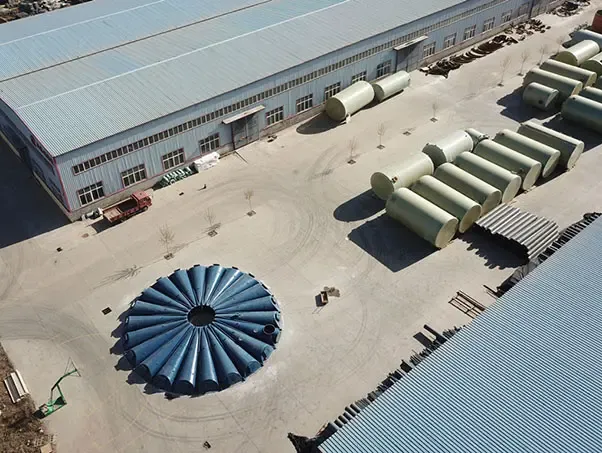
-
 Afrikaans
Afrikaans -
 Albanian
Albanian -
 Amharic
Amharic -
 Arabic
Arabic -
 Armenian
Armenian -
 Azerbaijani
Azerbaijani -
 Basque
Basque -
 Belarusian
Belarusian -
 Bengali
Bengali -
 Bosnian
Bosnian -
 Bulgarian
Bulgarian -
 Catalan
Catalan -
 Cebuano
Cebuano -
 China
China -
 China (Taiwan)
China (Taiwan) -
 Corsican
Corsican -
 Croatian
Croatian -
 Czech
Czech -
 Danish
Danish -
 Dutch
Dutch -
 English
English -
 Esperanto
Esperanto -
 Estonian
Estonian -
 Finnish
Finnish -
 French
French -
 Frisian
Frisian -
 Galician
Galician -
 Georgian
Georgian -
 German
German -
 Greek
Greek -
 Gujarati
Gujarati -
 Haitian Creole
Haitian Creole -
 hausa
hausa -
 hawaiian
hawaiian -
 Hebrew
Hebrew -
 Hindi
Hindi -
 Miao
Miao -
 Hungarian
Hungarian -
 Icelandic
Icelandic -
 igbo
igbo -
 Indonesian
Indonesian -
 irish
irish -
 Italian
Italian -
 Japanese
Japanese -
 Javanese
Javanese -
 Kannada
Kannada -
 kazakh
kazakh -
 Khmer
Khmer -
 Rwandese
Rwandese -
 Korean
Korean -
 Kurdish
Kurdish -
 Kyrgyz
Kyrgyz -
 Lao
Lao -
 Latin
Latin -
 Latvian
Latvian -
 Lithuanian
Lithuanian -
 Luxembourgish
Luxembourgish -
 Macedonian
Macedonian -
 Malgashi
Malgashi -
 Malay
Malay -
 Malayalam
Malayalam -
 Maltese
Maltese -
 Maori
Maori -
 Marathi
Marathi -
 Mongolian
Mongolian -
 Myanmar
Myanmar -
 Nepali
Nepali -
 Norwegian
Norwegian -
 Norwegian
Norwegian -
 Occitan
Occitan -
 Pashto
Pashto -
 Persian
Persian -
 Polish
Polish -
 Portuguese
Portuguese -
 Punjabi
Punjabi -
 Romanian
Romanian -
 Russian
Russian -
 Samoan
Samoan -
 Scottish Gaelic
Scottish Gaelic -
 Serbian
Serbian -
 Sesotho
Sesotho -
 Shona
Shona -
 Sindhi
Sindhi -
 Sinhala
Sinhala -
 Slovak
Slovak -
 Slovenian
Slovenian -
 Somali
Somali -
 Spanish
Spanish -
 Sundanese
Sundanese -
 Swahili
Swahili -
 Swedish
Swedish -
 Tagalog
Tagalog -
 Tajik
Tajik -
 Tamil
Tamil -
 Tatar
Tatar -
 Telugu
Telugu -
 Thai
Thai -
 Turkish
Turkish -
 Turkmen
Turkmen -
 Ukrainian
Ukrainian -
 Urdu
Urdu -
 Uighur
Uighur -
 Uzbek
Uzbek -
 Vietnamese
Vietnamese -
 Welsh
Welsh -
 Bantu
Bantu -
 Yiddish
Yiddish -
 Yoruba
Yoruba -
 Zulu
Zulu
Exploring the Advantages and Applications of FRP Pipes and Fittings in Modern Construction
Understanding FRP Pipes and Fittings A Comprehensive Overview
Fiber Reinforced Plastic (FRP) pipes and fittings have gained significant attention in various industries due to their exceptional properties and versatile applications. These materials combine the lightweight benefits of plastic with the strength and durability of fibers, resulting in products that are both robust and resistant to a multitude of environmental factors.
What Are FRP Pipes and Fittings?
FRP pipes are composite materials made by reinforcing a polymer matrix – typically made of thermosetting resin – with fibers such as glass, carbon, or aramid. The combination of these materials results in a product that boasts superior strength-to-weight ratios, chemical resistance, and longevity compared to traditional metal or concrete pipes. FRP fittings, which include couplings, elbows, tees, and flanges, are designed to connect various sections of FRP pipes, providing a complete piping system that is seamless and efficient.
Advantages of FRP Pipes and Fittings
1. Corrosion Resistance One of the most significant benefits of using FRP is its resistance to corrosion. Unlike metal pipes, which can rust and degrade over time when exposed to harsh chemicals, FRP does not corrode. This makes it an ideal choice for industries dealing with corrosive substances, such as chemical processing, wastewater treatment, and oil and gas.
2. Lightweight FRP products are significantly lighter than traditional materials like steel or concrete. This lightweight nature facilitates easier handling, transportation, and installation, thereby reducing overall labor costs and time.
4. Thermal Insulation FRP materials typically have lower thermal conductivity than metals, which helps in insulation. This property is beneficial in applications where maintaining temperature is critical, such as in the transportation of hot or cold fluids.
frp pipes and fittings

5. Longevity With a life expectancy that often exceeds 50 years, FRP pipes and fittings can offer substantial savings in terms of replacement and maintenance costs over their lifecycle.
6. Versatility FRP systems can be manufactured in various sizes, shapes, and configurations, making them adaptable to a wide range of applications. They are commonly used in sectors such as agriculture, oil and gas, water and wastewater management, and construction.
Applications of FRP Pipes and Fittings
FRP pipes and fittings are utilized in diverse applications
- Chemical Processing The chemical resistance of FRP makes it ideal for transporting chemicals in refineries and manufacturing plants. - Water Treatment Their non-corrosive nature is ideal for the transport of potable water, as well as in wastewater treatment facilities.
- Industrial and Municipal Applications FRP is used in various infrastructure projects, such as stormwater management systems, drainage systems, and sewer systems, where durability is critical.
- Marine Applications Due to their resistance to saltwater and marine organisms, FRP materials are frequently used in shipbuilding and offshore platforms.
Conclusion
With rising concerns regarding the durability and maintenance costs of traditional piping systems, FRP pipes and fittings offer a modern solution that meets the demands of various industries. Their unique combination of lightweight, durability, and corrosion resistance makes them an attractive option for engineers and project managers alike. As technology continues to advance and new applications are explored, the use of FRP materials is expected to grow, solidifying their place as a vital component in the future of infrastructure development and industrial applications.
Latest news
-
Exploring the Benefits of Top Hammer Drifter Rods for Enhanced Drilling PerformanceNewsJun.10,2025
-
High-Precision Fiberglass Winding Machine for GRP/FRP Pipe Production – Reliable & Efficient SolutionsNewsJun.10,2025
-
FRP Pipes & Fittings for Shipbuilding - Corrosion-Resistant & LightweightNewsJun.09,2025
-
Premium FRP Flooring Solutions Durable & Slip-ResistantNewsJun.09,2025
-
Premium Fiberglass Rectangular Tanks Durable & Lightweight SolutionNewsJun.09,2025
-
Tapered Drill String Design Guide Durable Performance & UsesNewsJun.09,2025









